Donald Trump’s Victory Speeches
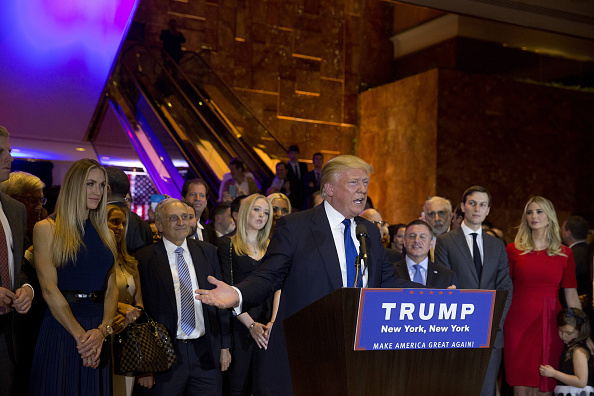
As he has in so much of his presidential campaign, New York real estate mogul Donald Trump has broken the usual rules around victory speeches. He’s appeared at ostentatious locations—such as the Trump Tower in New York shown here—that typical candidates would avoid, brought more family and fewer politicians on stage with him and, in an unusual move, spotlighted his campaign staff to a degree almost never seen. In a sense, the backdrops tell as much as the speeches do about his unorthodox campaign.
Donald Trump, New York

Many of the victory speeches have a similar staging, laid out like Da Vinci’s “The Last Supper.” Trump is at the center, usually in front of a lectern, while his family members are spread to his left and right in a long tableau. From afar, the staging softens him, positioning him as the head of a large, adoring family.
New York, Closeup
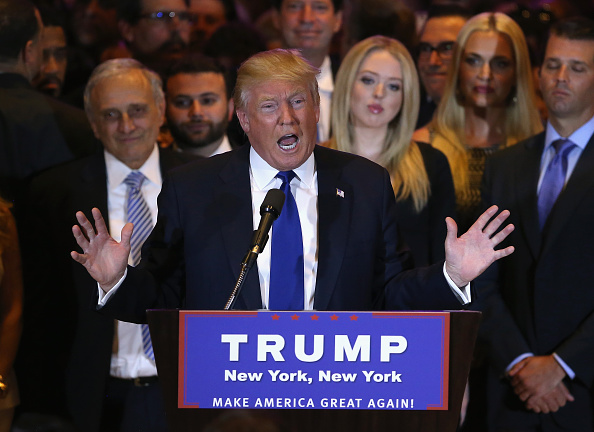
But the former reality TV star is also aware of the importance of the closeup. The people who stand just over each shoulder are also positions of pride. At his victory speech in Manhattan Wednesday, his daughter, Tiffany, was over his left shoulder, while honorary state campaign co-chairman Carl Paladino, a real estate developer who unsuccessfully ran for governor in 2010, was over his right shoulder. Paladino and other backers that Trump has spotlighted tend to be more colorful than the usual politicians who flank presidential candidates at these speeches.
Ted Cruz, South Carolina
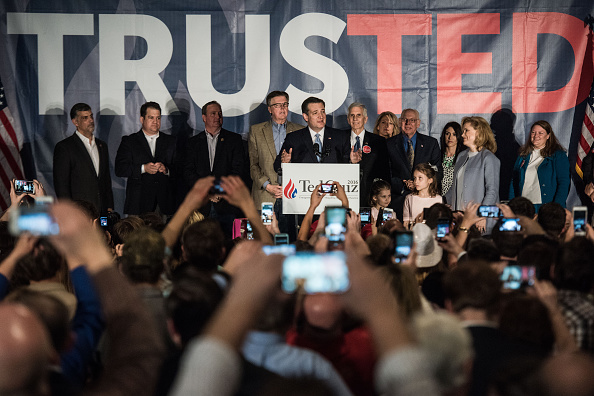
The layout of the victory speech is not unusual. Texas Sen. Ted Cruz has used a similar staging, bringing his young daughters, Caroline and Catherine, on stage next to his wife, Heidi, while lining up supporters behind him in a row, as he did in his speech after the South Carolina primary.
Hillary Clinton, New York
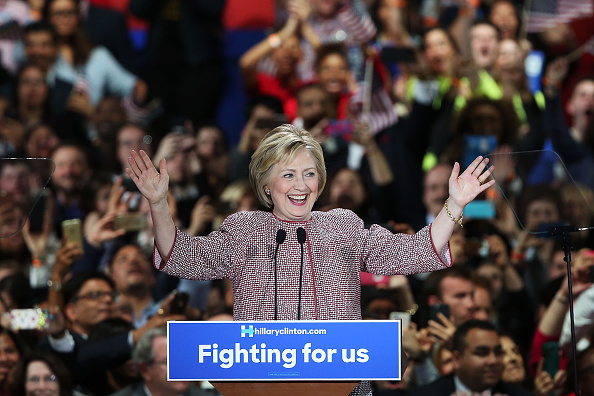
But it’s not the only option. Democratic presidential candidate Hillary Clinton, for example, often chooses to stand alone with part of the crowd behind her, bringing her husband, Bill, and daughter, Chelsea, on stage only at the end, perhaps to avoid the possibility of her husband accidentally drawing attention. By putting the crowd behind her, she also emphasizes her grassroots supporters.
Donald Trump, Iowa

But Trump has a much larger family to share the stage, including his wife, Melania; sons Donald Jr. and Eric, and their wives; and daughter, Ivanka, and her husband. And in many of the early primary states, he did not have the typical lineup of local political endorsers to parade. After the Iowa caucuses, he was joined on stage only by family.
Donald Trump, New Hampshire

After his victory in the New Hampshire primary, the only politician on stage with him was state Rep. Alfred Baldasaro, a Republican from Londonderry and Marine veteran seen here in a “Make America Great Again” baseball cap. Like Paladino, Baldasaro has a reputation for making colorful statements that would probably keep him off a typical candidate’s stage in such a prominent spot.
Donald Trump, South Carolina
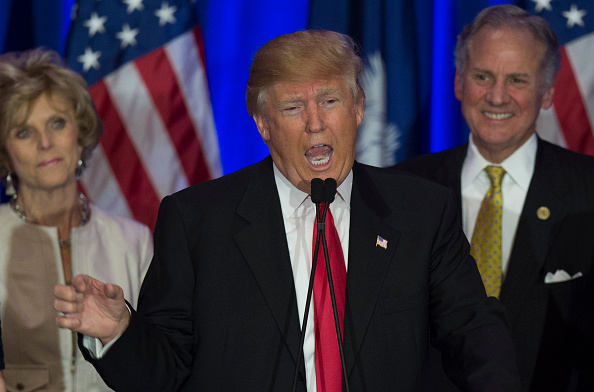
As the primaries wore on, Trump had started to pick up more well-known political supporters. In South Carolina, that was Lt. Gov. Henry McMaster, who flanked Trump during his victory speech along with his wife, Peggy McMaster.
Donald Trump, South Carolina, Wide
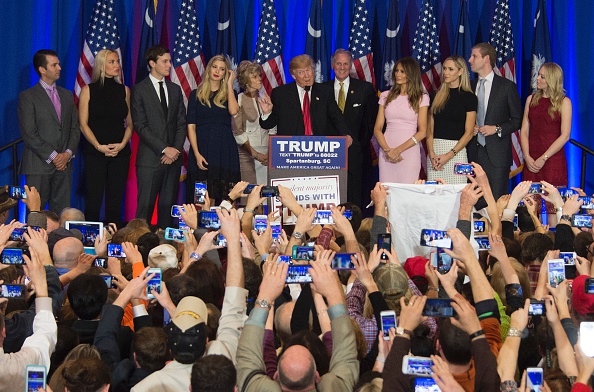
Still, the victory speech in South Carolina still followed the typical pattern, with his family spreading out across the stage with him.
Donald Trump, Nevada

After the Nevada caucuses, he was also joined on stage by campaign spokeswoman Hope Hicks, on the far right, campaign manager Corey Lewandowski, second from the right. That was an unusual move, as campaign staff typically stay off stage, and it highlighted the close-knit nature of his campaign, which was then run by a very small and loyal crew.
Donald Trump, Super Tuesday
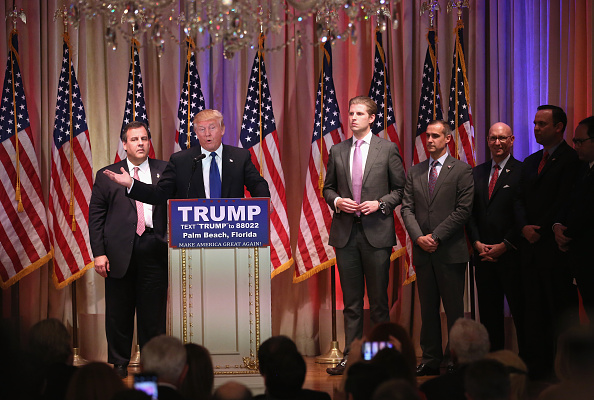
One exception was Super Tuesday. After the March 1 primaries, Trump had a much smaller group than usual stand mostly off stage, highlighting New Jersey Gov. Chris Christie, who had just endorsed him. He also gave the speech at his Mar-a-Lago resort beneath a crystal chandelier, a ritzier locale than a typical candidate would choose.
Donald Trump, Super Tuesday II

His victory speech after “Super Tuesday 2,” was at the similarly ritzy Trump National Golf Club in Jupiter, Florida, where he showcased Trump-branded steaks, water and wine in an effort to rebut criticism from former Republican nominee Mitt Romney over his business ventures. As with some other victory events, Trump also answered questions from reporters, making it more of a press conference than a typical speech.
Donald Trump, Florida
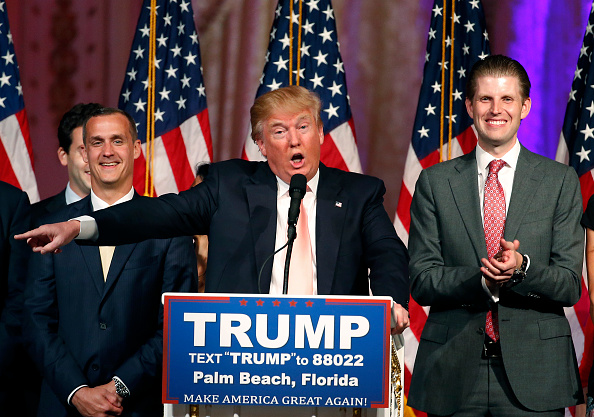
By the time he had dispatched Florida Sen. Marco Rubio in his home state, Trump had elevated Lewandowski to be, literally, his right-hand man, with the campaign manager standing just next to him at the victory speech. (Trump’s son, Eric, was on the other side.) That was notable because Lewandowski was under fire at the time over an altercation with a reporter.
More Must-Reads from TIME
- How Donald Trump Won
- The Best Inventions of 2024
- Why Sleep Is the Key to Living Longer
- Robert Zemeckis Just Wants to Move You
- How to Break 8 Toxic Communication Habits
- Nicola Coughlan Bet on Herself—And Won
- Why Vinegar Is So Good for You
- Meet TIME's Newest Class of Next Generation Leaders
Contact us at letters@time.com